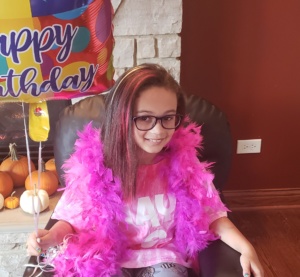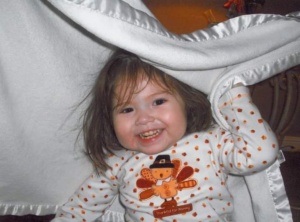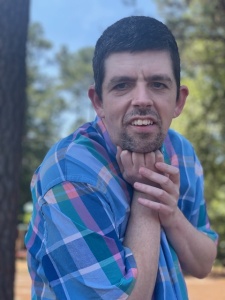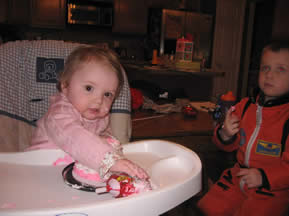Dylan J | Propionazidämie | Age 2 1/2
Dylan J wurde im Oktober geboren 12th, 2013 in Waconia, Minnesota, mit einem Gewicht von 8 Pfund, 2 ounces. Nachdem Dylan wurde geboren, die Ärzte festgestellt, dass er eine unterdurchschnittliche Körpertemperatur hatte, so brachten sie ihn ins Kinderzimmer zurück, um ihn zum Aufwärmen. Er wurde zu uns zurückgebracht, und von dort aus für zwei Tage, wir erlebten einen normalen, gesunder kleiner Junge, so dachten wir.
In den frühen Morgenstunden am Oktober 15th, nur 15 Stunden, da wir waren aus dem Krankenhaus als eine Familie von entladen 3, Dylan handelte irgendwie seltsam. Er war sehr schläfrig, und schien kalt anfühlen. Mein Ehemann, Adam, und ich nahm seine Temperatur und er war bei 95 Grad. Zu wissen, dass war nicht normal, Ich rief meine Schwester- in- Recht, die eine NICU Krankenschwester hier in den Städten, und sie sagte uns tun Haut-auf-Haut zu versuchen, ihn zu erwärmen, und wenn das nicht funktioniert hat, zu nennen wahrscheinlich den Kinderarzt auf Abruf. Zu unserer Bestürzung, eine Stunde vergangen und er hatte überhaupt nicht aufgewärmt, auch nach allem, was wir hatten versucht,. Ich rief die auf Abruf Kinderarzt und er sagte uns, ihn in den nächsten paar Stunden zu sehen, wenn er war immer noch kalt und war immer noch sehr lethargisch und wollte nicht essen, wir könnten warten, um ihn zum Kinderarzt Büro zu bringen, die an diesem Morgen um 8 Uhr geöffnet, oder wir könnten ihn in die Notaufnahme bringen. Etwa eine Stunde später, mein Mann nahm Dylan, um ihn zu mir zu bringen und Futtermittel zu versuchen,, und seine Arme fiel schlaff hinter seinem Körper. Es ist ein Bild, das mir in den Sinn verbrannt. Wir wussten, dass in diesem Augenblick etwas falsch war, so packten wir ihn in seinem Autositz und fuhr ihn in die Notaufnahme. Einmal da, sie sahen ihn über, und sagte uns, dass da Babys können uns nicht sagen, was falsch ist, sie müssten viele Bluttests und eine Lumbalpunktion zu tun, nach unten zu verengen, was los war. Ich erinnere mich an die ER Arzt uns sagen, es war schwer, kleine Babys zu sehen bekommen stach so sagte er uns in einem anderen Raum warten, um zu gehen (tat wenig, ich weiß, ich wäre viel schlimmer Zeuge, dass diese stochert in Dylans Leben zu kommen). Dylans Atmung begann auch extrem schwer zu werden, er versuchte wirklich hart jeden Atemzug in die und aus. Ich erinnere mich nicht, wie lange wir im Zimmer waren, aber ich erinnere mich an den Arzt kommen und mein Mann und ich sage, sie hatten keine Ergebnisse noch zurück, aber sie glaubte, dass er zu einem Kinderkrankenhaus in der Innenstadt von Minneapolis übertragen werden benötigt, ihn an ein Beatmungsgerät zu setzen, denn er war zu erschöpft, immer so hart von der Arbeit zu atmen. Er verließ den Raum, und ich verlor es, ein Ventilator, für mein kleines Baby? Was war falsch? Später kam der Arzt zurück und sagte:, er glaubte, tatsächlich könnten sie in der Lage sein, nur Sauerstoff versuchen, so wurden sie übertragen ihn nach oben, ihrer NICU, zu sehen, ob wir es unter Kontrolle bekommen könnte.
Es war dann, dass die Warte Spiel begann. Sie haben mehrere Bluttests, an einem Punkt kommen zu dem Schluss, dass er nur dehydriert. Sein Blutzucker war sehr gering, und sie glaubten, er hatte einfach nicht genug gegessen. Stunden vergingen, und wir warteten auf der Neonatologie, der seine Runden tat um die Vorstadt Krankenhäuser, zu kommen und schauen Sie sich Dylan. Gegen Mittag, der Arzt kam herein und sah ihn an und sagte uns, er glaubte Dylan noch ins Krankenhaus überführt werden mussten Kinder auf ein Beatmungsgerät gestellt werden, da der Sauerstoff selbst nicht schneiden wurde. Als er erzählte uns, diese, eine Krankenschwester ging in, reichte ihm ein Stück Papier, zu denen schaute er, antwortete: "Oh my gosh", und verließ den Raum. Wir waren ausgeflippt, aber denke nicht zu viel davon. Wenige Minuten später kam er zurück und sagte uns, dass Dylans Ammoniakspiegel war 900. Er sah unsere sehr verwirrt Gesichter und sagte uns, dass dies sehr, sehr ernst, dass der Normalbereich war 10-35, und dass Dylan kann es nicht machen. Ich erinnere mich, dass taub, die Idee, dass mein neues Baby sterben könnte, wenn eine Stunde früher hatten wir gerade dachten, er sei dehydriert. Der Arzt verließ eine Ambulanz einzurichten Dylan zu nehmen, nicht ins Krankenhaus Kinder mehr, aber an der University of Minnesota Kinderkrankenhaus, weil er brauchte eine besondere Behandlung, nur an der Universität. Er musste auf Dialyse gebracht werden.
Ich fuhr in der Ambulanz mit Dylan, und das waren die längsten 45 Minuten meines Lebens. Ich erinnere mich, er werde in den Krankenwagen zu sterben, dass es nichts gab, konnte ich tun, Ich hatte gerade auf dem Vordersitz zu sitzen und beten. Sobald wir im Krankenhaus angekommen, es war wie eine Szene eines Films aus, all diese Ärzte wimmelte uns, sagen mir, sie würden gewartet, zu erklären, was los war, um mich Einwilligungserklärungen zu unterzeichnen Dialyse beginnen. Erzählte mir, dass auf eine Dialyse tun 3 Tag altes Baby war sehr riskant, aber was andere Wahl haben wir haben? Mit der Zeit kamen wir im Krankenhaus seinen Ammoniak zu geklettert 1200. My husband and I, und unsere Familien, wurden in die Familie Wartezimmer führte, wo wir Wort auf Dylan zu hören, wartete. Es war zu dieser Zeit wurden wir zu unserem Stoffwechsel-Arzt eingeführt. Sie kam und traf sich mit uns und beschrieb, was sie glaubte, dass Dylan hatte. Eine seltene genetische Störung, wo er konnte nicht Protein brechen richtig, und anstatt sie zu brechen, er würde nur bis zu einem gewissen Punkt brechen und dann die schlechten Dinge (Propionsäure und Ammoniak), würde sich in seinem System zurück. Wobei es so hoch wie es war, es vergifte seine Organe. Sie sagten uns, sie glaubten, sein Gehirn war geschwollen und sie konnten nicht sicher sein, was Gehirn Schaden, den er von der hohen Ammoniak erhalten hatte, sie würde Ultraschalls und ein MRT, die beide kamen ziemlich gut aus, aber wirklich Zeit würde sagen.
Viele Stunden später, Dialyse begann, und eine Krankenschwester kam in, und sagte, die Worte, Ich werde nie vergessen: "Ich weiß, das ist der schlimmste Tag Ihres Lebens gewesen ist, aber ich wollte, dass du eine gute Nachricht zu geben,, Dylans Ammoniak ist 90 "! So schnell, wie er wurde krank, er wurde besser genauso schnell. Sie konnten Dylans Neugeborenen-Screening-Ergebnisse zu eilen und dass bestätigt seine Diagnose von Propionazidämie. Die Ärzte hatten nun eine Diagnose und waren in der Lage, ihn zu behandeln. Als die Tage auf der Intensivstation übergeben, seine Ammoniak stabilisiert, sie waren in der Lage, ihn auf einem niedrigen Protein-Diät von Propimex und Muttermilch zu starten, und er hat wirklich gut. Wir konnten nach Hause gehen nach nur 7 Tage auf der Intensivstation.
Das Leben mit Dylan danach schien sehr gut zu gehen, und für uns war "normal". Er war ein guter Esser, immer aß die Menge an Protein und Kalorien er an einem Tag zu bekommen benötigt und war normal entwickelt. Ich würde seine Ketone in seinem Urin überprüfen täglich (unsere Ärzte dachte, ich war ein wenig verrückt für die Überprüfung so viel, aber es war mein Indikator etwas war aus), und sie waren immer negativ, bis er im Begriff war, 5 months old. Dylan begann fast täglich immer Spur zu klein Ketone im Urin. Wir würden versuchen, mehr Flüssigkeit zu drücken, aber sie würden noch gehen wieder nach oben. Er war all seine Flaschen Essen sehr gut noch und wirkt völlig normal. Jedoch, Als wir sahen, Ketone, wir würden ihn in die Notaufnahme bringen und seine Ammoniak wäre hoch, in den 100 der. Die gruseligsten Teil war, er nie handelte anders, nie zeigte Anzeichen sein Ammoniak hoch war, mit Ausnahme der Ketone.
Nach dem in den und aus dem Krankenhaus für Wochen zu einer Zeit zwischen Februar und Mai sein, unsere metabolische Ärzte beschlossen, ihn auf Carbaglu zu starten, halten seine Ammoniak in Schach zu helfen. Als wir aus dem Krankenhaus Ende April entlassen nach Carbaglu Start, trafen wir uns für eine Follow-up-Termin mit unserem metabolischen Ärzte. Es war zu diesem Termin, dass Dylans Arzt setzte uns und uns gesagt, sie glaubte, dass Dylan eine Lebertransplantation erforderlich. Sie sehen, sie waren uns nie mit Sicherheit sagen können, ob Dylan einen schweren Fall von PA hatte oder nicht, denn nach Gentests wurde getan,, kam es zurück, dass seine beiden Mutationen war noch nie zuvor gesehen worden. So hatten wir Art zu warten und sehen, wie er es tat. Wir waren schockiert, nie hatten wir dachten, Lebertransplantation wäre etwas, die wir für Dylan diskutieren würde. Mein Mann und ich ging nach Hause und für ein paar Wochen dachte darüber nach, darüber gebetet, rief sie über, erforscht es, bekam Geschichten von anderen Eltern, die durch diese gegangen waren, und schließlich beschlossen, dass wir nicht warten wollte, bis eine andere Krise zu Dylan passiert ist, und er hatte Hirnschäden oder schlimmer, wir wollten Dylan Dylan bleiben. So im Mai 8th dieses Jahres, wenn Dylan 7 months old, wir platziert Dylan auf der Transplantations-Liste eine neue Leber bekommen.
On July 24th, wir haben den Ruf, dass sie für Dylan eine neue Leber hatte. Wir ließen, was wir taten und ins Krankenhaus gefahren, wo sie die ganze Vorbereitung vor der Operation hat funktioniert, vorbereitet uns, und wartete auf Wort, wann die Orgel in Minnesota sein würde und wenn eine Operation starten. On July 26th, die Operation geschah. Mein Mann und ich ging Dylan bis in die Pre-op-Raum und übergab ihn an das Transplantationsteam. Wir waren in der Familie Wartezimmer geführt, wo wir mit unseren Familien warteten 8 sehr lange Stunden. Wann kam der Chirurg aus, mit einem Lächeln auf seinem Gesicht, und sagte uns, es war sehr gut gegangen, es war so eine Erleichterung. Wir wurden in der PICU aufgenommen, wo wir Dylan waren in der Lage zu sehen,, und so viel Angst, wie ich war, ihn zu sehen, wenn wir taten, er sah so gut aus. Yes, er wurde so viele Rohre und Leitungen angeschlossen, und er war geschwollen, aber er sah genauso aus wie unser Junge. Wir waren im Krankenhaus 18 Tage wie Dylan erholt. Sein Körper akzeptiert die neue Leber sehr gut, und einer der besten Momente unseres Lebens, war, als unsere metabolische Arzt und sagte uns kam, dass die organische Säure Tests, die sie auf Dylan genommen hatte nach der Operation hatte er keine Propionsäure in seinem Körper gezeigt hatte,! Was ein Wunder.
Es ist schon fast 2 Jahre seit Dylan hat seine Transplantation hatte und er tut fantastisch. Er hat ein paar Komplikationen hatte da aber er ist durch sie mit Bravour bekommen. Dylan wird auf Anti-Ablehnung sein Medikamente sein ganzes Leben. Es ist die Angst, dass er jederzeit in Ablehnung gehen kann, aber wenn er früh genug gefangen, es ist sehr umgänglich. Und hier in Minnesota, mit unseren Ärzten, sie wird auf ihn ein sehr wachsames Auge behalten. Wir haben auch nicht viel Forschung auf, wenn diese Leber sein ganzes Leben lang dauern wird, oder wenn er ein neues brauchen schließlich, aber zur selben Zeit, wir haben nicht eine Tonne von Daten auf das, was PA tut, um den Körper langfristig. Unser Stoffwechsel-Ärzte sind sehr vorsichtig mit ihm, sie hielten ihn auf seinen Stoffwechsel-Formel nur bis zu diesem letzten Oktober, als wir versuchten, zu sehen, was seine Labors tat, wenn er es losging und bisher hat er stabil geblieben. Er ist immer noch auf eine begrenzte Protein-Diät, jetzt bekommt er einen Tag 30-35 g. Die Veränderung seit Transplantation in ihm war das Zehnfache. Bevor er leise hatte und nun sein Ton ist so viel besser, er läuft und klettert wie jeder andere 2 ½ Jahre alt, als wir im Park gerade spielen! Obwohl es war mein Mann die härteste Entscheidung und ich je gemacht, dies war die richtige Entscheidung für uns, wir Dylan wollte das beste Leben zu führen, er konnte, und obwohl es gab so viele Risiken, und wir wissen nicht, 100% was die Zukunft bringen wird, Das war es wert, weil er so ein glückliches und sehr gesund 2 ½ Jahre alten kleinen Jungen!










